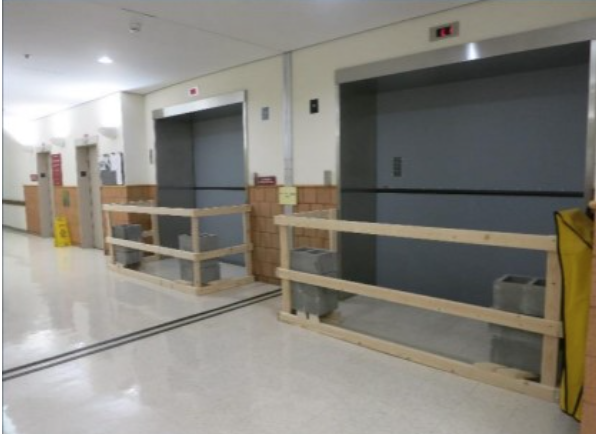In the realm of sustainable construction practices, enhancing energy efficiency stands as a cornerstone for reducing environmental impact and operational costs. Commercial buildings, with their substantial energy consumption, are prime candidates for efficiency improvements. Among the array of strategies available, Blower Door Testing emerges as a fundamental starting point, offering a clear pathway to identify and rectify energy inefficiencies in building envelopes.
Understanding Blower Door Testing and Its Significance
Blower Door Testing is a diagnostic tool used to measure the airtightness of buildings. It involves mounting a powerful fan onto an exterior door frame, creating a pressure difference between the interior and exterior of the building. This pressure difference allows for the detection of Air leaks through the building envelope, which includes walls, windows, doors, and ceilings. By quantifying the amount of air leakage, professionals can assess the overall tightness of the building and pinpoint areas that require sealing or insulation improvements.
The significance of Blower Door Testing lies in its ability to provide concrete data on a building's airtightness, which directly correlates with energy efficiency. A well-sealed building envelope reduces the loss of conditioned air (heated or cooled) to the outside environment, resulting in lower energy consumption for heating and cooling. This translates to reduced utility bills and a smaller carbon footprint, making it a vital step towards sustainable building practices.
Benefits of Blower Door Testing for Commercial Buildings
Blower Door Testing offers a myriad of benefits for commercial buildings, making it an indispensable tool for building owners and facility managers. Firstly, it helps identify and prioritize areas for air sealing and insulation upgrades, allowing for targeted improvements that yield maximum energy savings. Additionally, by improving a building's airtightness, Blower Door Testing enhances indoor air quality by reducing the infiltration of outdoor pollutants and allergens.
Moreover, Blower Door Testing can assist in achieving green building certifications, such as LEED (Leadership in Energy and Environmental Design), which require a minimum level of airtightness. This certification not only enhances the building's market value but also demonstrates a commitment to sustainable practices, appealing to environmentally-conscious tenants and investors. Overall, the benefits of Blower Door Testing extend beyond energy savings, encompassing improved comfort, health, and environmental stewardship.
The Blower Door Testing Process
The Blower Door Testing process typically involves several key steps. Firstly, all windows, doors, and other openings in the building are closed to create a sealed environment. The Blower Door fan is then installed in an exterior door, and the fan is used to either pressurize or depressurize the building to a standard pressure level. During this process, technicians use specialized equipment to measure the airflow and pressure differentials, allowing them to calculate the air leakage rate of the building.
Once the testing is complete, the results are analyzed to determine the overall airtightness of the building. This information is crucial for identifying areas that require attention and developing a targeted plan for improving energy efficiency. By following through with recommended improvements, building owners can significantly reduce energy waste and enhance the overall performance of their commercial buildings.
Common Findings from Blower Door Testing
Blower Door Testing often reveals common issues that contribute to energy inefficiency in commercial buildings. These may include gaps and cracks in the building envelope, poorly sealed windows and doors, inadequate insulation, and HVAC system leaks. Identifying and addressing these issues can lead to substantial energy savings and improved comfort for building occupants.
In addition to air leaks, Blower Door Testing can also uncover issues with moisture infiltration and indoor air quality. Excessive air leakage can allow moisture to enter the building, leading to mold growth and structural damage. By sealing these leaks, building owners can improve indoor air quality and prevent potential health hazards.
Incorporating Blower Door Testing into Building Design and Maintenance
Blower Door Testing is most effective when integrated into the building design and maintenance process. For new construction, testing can be conducted during the pre-drywall phase to ensure that the building envelope is properly sealed before the installation of finishes. This proactive approach helps prevent costly rework and ensures that the building meets energy efficiency goals from the outset.
For existing buildings, Blower Door Testing can be part of a comprehensive energy audit, which includes a thorough inspection of the building envelope, HVAC systems, and other energy-related components. By regularly conducting Blower Door Tests and implementing recommended improvements, building owners can maintain optimal energy performance and prolong the lifespan of their commercial buildings.
Conclusion
In conclusion, Blower Door Testing serves as a crucial first step in improving the energy performance of commercial buildings. By identifying and addressing air leaks and other inefficiencies, building owners can significantly reduce energy waste, lower utility bills, and create healthier indoor environments. Incorporating Blower Door Testing into building design and maintenance practices can lead to long-term energy savings and increased sustainability, making it a valuable investment for any commercial property owner.

